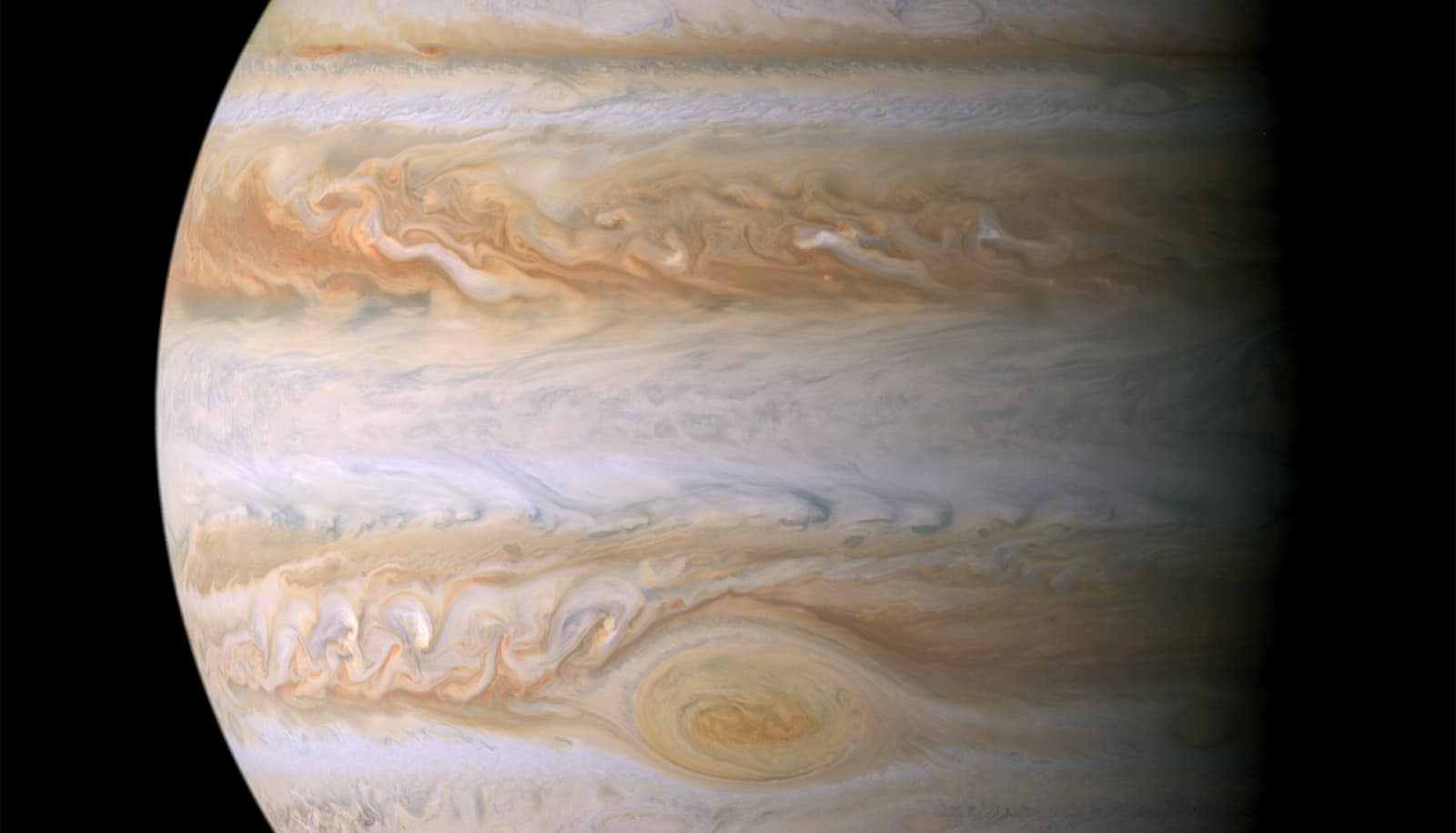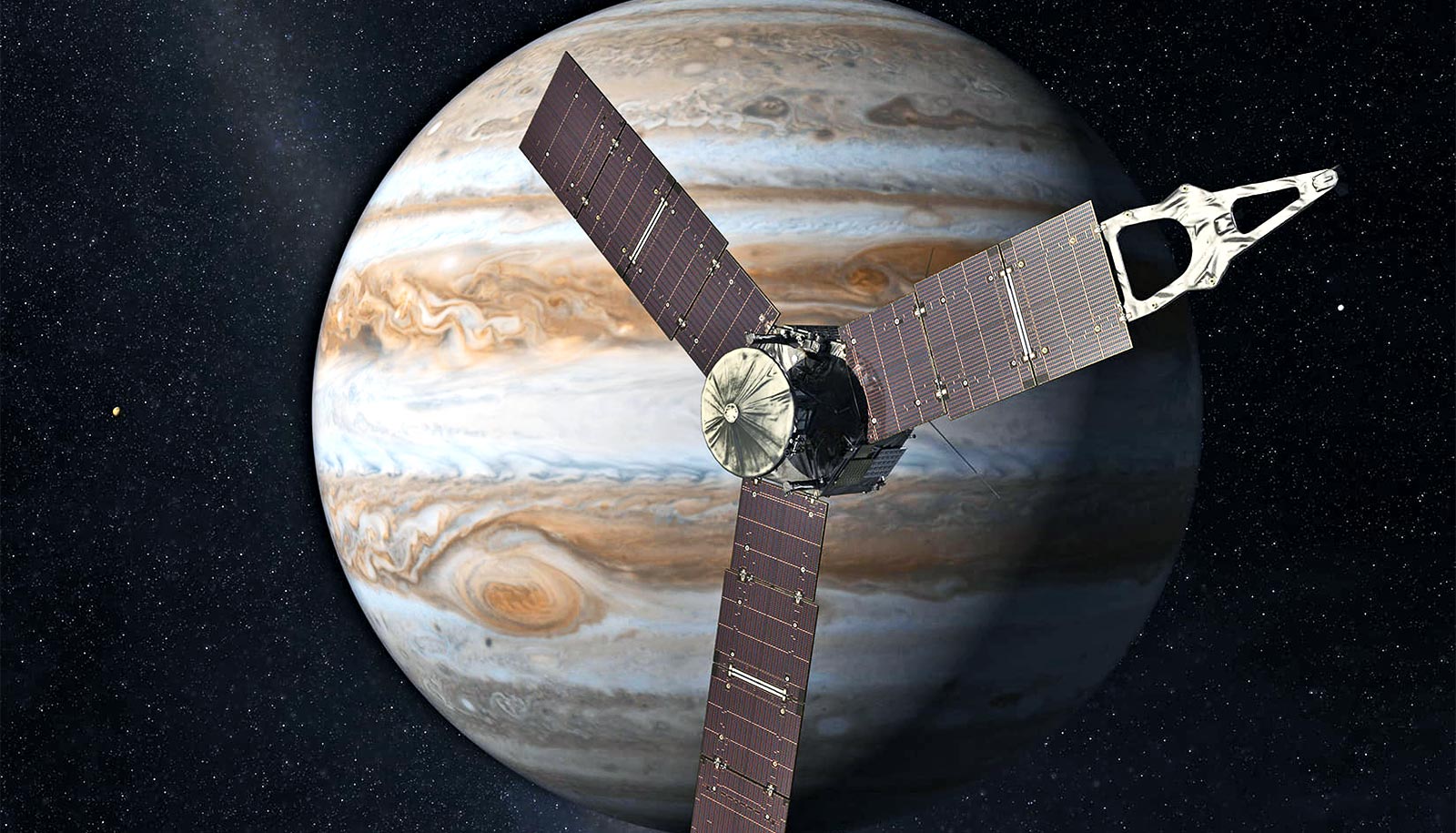NASA’s James Webb Space Telescope has discovered a fast-moving jet stream in Jupiter’s atmosphere that is blowing twice as fast as the visible cloud layers below it, creating wind shears that far exceed anything seen on Earth.
The high-speed jet stream, which is traveling at 320 miles per hour (515 kilometers per hour) and is more than 3,000 miles (4,800 kilometers) wide and sits over Jupiter’s equator, 15 to 30 miles (25 to 50 kilometers) above the main cloud deck familiar from optical photos.
Based on observations by NASA’s Hubble Space Telescope, winds in the visible cloud layer blow at about 180 mph (250 km/hour). This means that for every kilometer above these visible clouds, the wind speed increases by 7 to 10 kilometers per hour, according to Ricardo Hueso, lead author of a paper describing the findings published in the journal Nature Astronomy.
“This is something that totally surprised us,” says Hueso of the University of the Basque Country in Bilbao, Spain. “What we have always seen as blurred hazes in Jupiter’s atmosphere now appear as crisp features that we can track along with the planet’s fast rotation and move much faster than the typical velocities found in Jupiter’s equator at cloud level.”

The discovery of this jet stream is giving insights into how the layers of Jupiter’s famously turbulent atmosphere interact with each other, and how the Webb telescope is uniquely capable of tracking those features.
Webb’s NIRCam (Near-Infrared Camera) captured the new images of Jupiter in July 2022 as part of the Early Release Science (ERS) program. The ERS observations of the Jupiter system are jointly led by Imke de Pater, professor emerita of astronomy at the University of California, Berkeley, and Thierry Fouchet from the Observatory of Paris.
“Even though various ground-based telescopes, spacecraft like NASA’s Juno and Cassini, and NASA’s Hubble Space Telescope have observed the Jovian system’s changing weather patterns, Webb has already provided new findings on Jupiter’s rings, satellites, and its atmosphere,” de Pater says.
The NIRCam obtained images of Jupiter 10 hours apart—one Jupiter day—in four different filters, each uniquely able to detect changes in small features at different altitudes of Jupiter’s atmosphere. The wind speed was calculated by tracking the motion of small features, such as clouds—most likely ammonia ice mixed with photochemical haze particles typical of Jupiter’s atmosphere.
“We knew the different wavelengths of Webb and Hubble would reveal the three-dimensional structure of storm clouds, but we were also able to use the timing of the data to see how rapidly storms develop,” says coauthor Michael Wong, co-investigator for the Jovian system ERS program at UC Berkeley.
The high-speed jet stream may be a deep counterpart of a complex phenomenon that has been observed for decades on Jupiter, Saturn, and Earth: regular oscillations of temperatures and winds that occur in the stratosphere, high above these planets’ atmospheres. On Jupiter, these equatorial thermal oscillations between 30 and 150 kilometers above the visible cloud layer have a periodicity of four to six years.
“Jupiter has a complicated but repeatable pattern of winds and temperatures in its equatorial stratosphere, high above the winds in the clouds and hazes measured at these wavelengths,” says team member Leigh Fletcher of the University of Leicester in the United Kingdom.
“If the strength of this new jet is connected to this oscillating stratospheric pattern, we might expect the jet to vary considerably over the next two to four years. It’ll be really exciting to test this theory in the years to come.”
Hueso notes that jets are one of the main features of the atmospheres of both Jupiter and Saturn. They are so perfectly aligned with latitude that they are called zonal jets. These zonal alignments are a consequence of the fast rotation of the planets (both Jupiter and Saturn have a rotation period of about 10 hours), which results in a balance between Coriolis forces and latitudinal gradients of pressure.
In Jupiter and Saturn, the jets are mostly stable in time, with only minor changes at cloud level observed over years and decades.
“To me, the exciting thing is that nobody was expecting this narrow, high-speed jet before JWST,” Wong says. “We knew there was a narrow jet like this on Saturn, so to discover a similar feature on Jupiter enables new comparative studies of the two giant planets, even if the Jupiter jet turns out to have a different formation mechanism.”
Astronomers, including de Pater and Wong, have long observed Jupiter in microwave, infrared, visible, and ultraviolet wavelengths using ground and space-based telescopes to study the lower, deeper layers of the planet’s atmosphere, where gigantic storms and ammonia ice clouds reside. Webb’s instruments look farther into the near-infrared than before and are sensitive to the higher-altitude layers of the atmosphere, around 15 to 30 miles (25 to 50 kilometers) above Jupiter’s cloud tops.
So while in earlier near-infrared images these high-altitude hazes have typically looked blurry, with enhanced brightness over the equatorial region, Webb can resolve finer details within the bright hazy bands.
Source: UC Berkeley


